Photos: Cambria water shortage
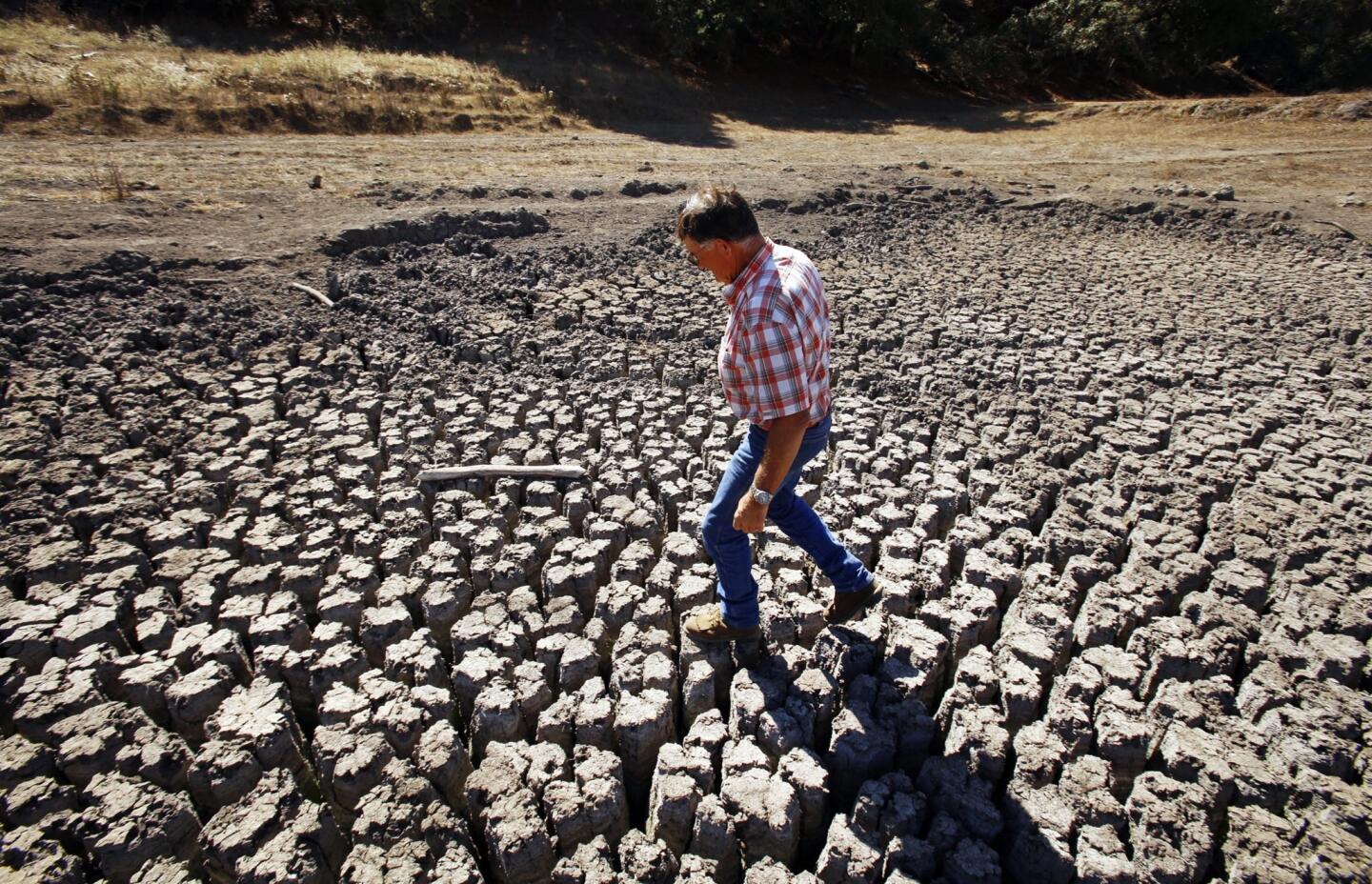
Jon Pedotti walks on the cracked bottom of a dry lake bed on his ranch in October. (Al Seib / Los Angeles Times)
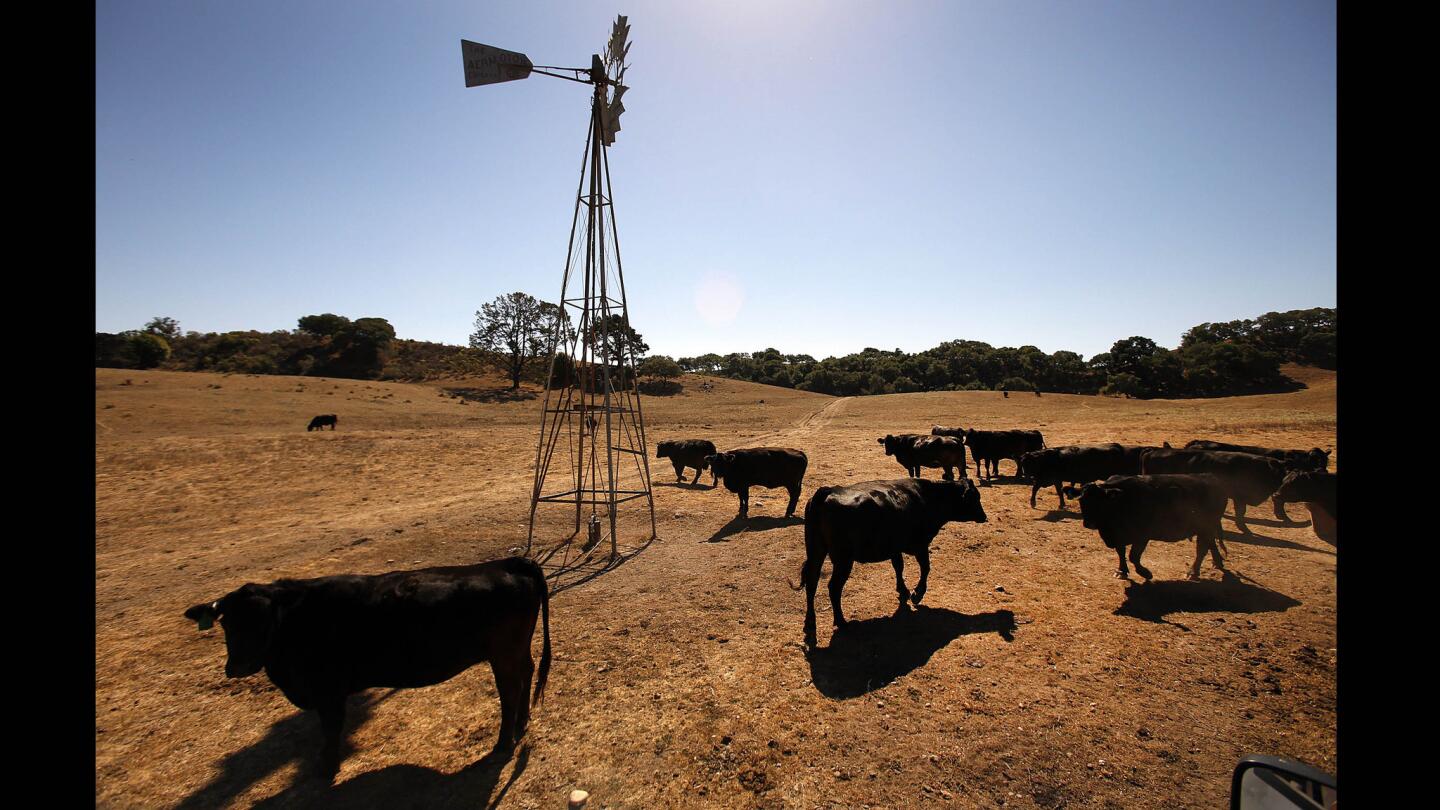
A windmill-powered well feeds water to a trough for some of Jon Pedotti’s 280 head of cattle in October. For the others, he hauls a 500-gallon tank of water to sate their thirst on his 1,561-acre ranch located along San Simeon Creek in the foothills near Cambria. (Al Seib / Los Angeles Times)
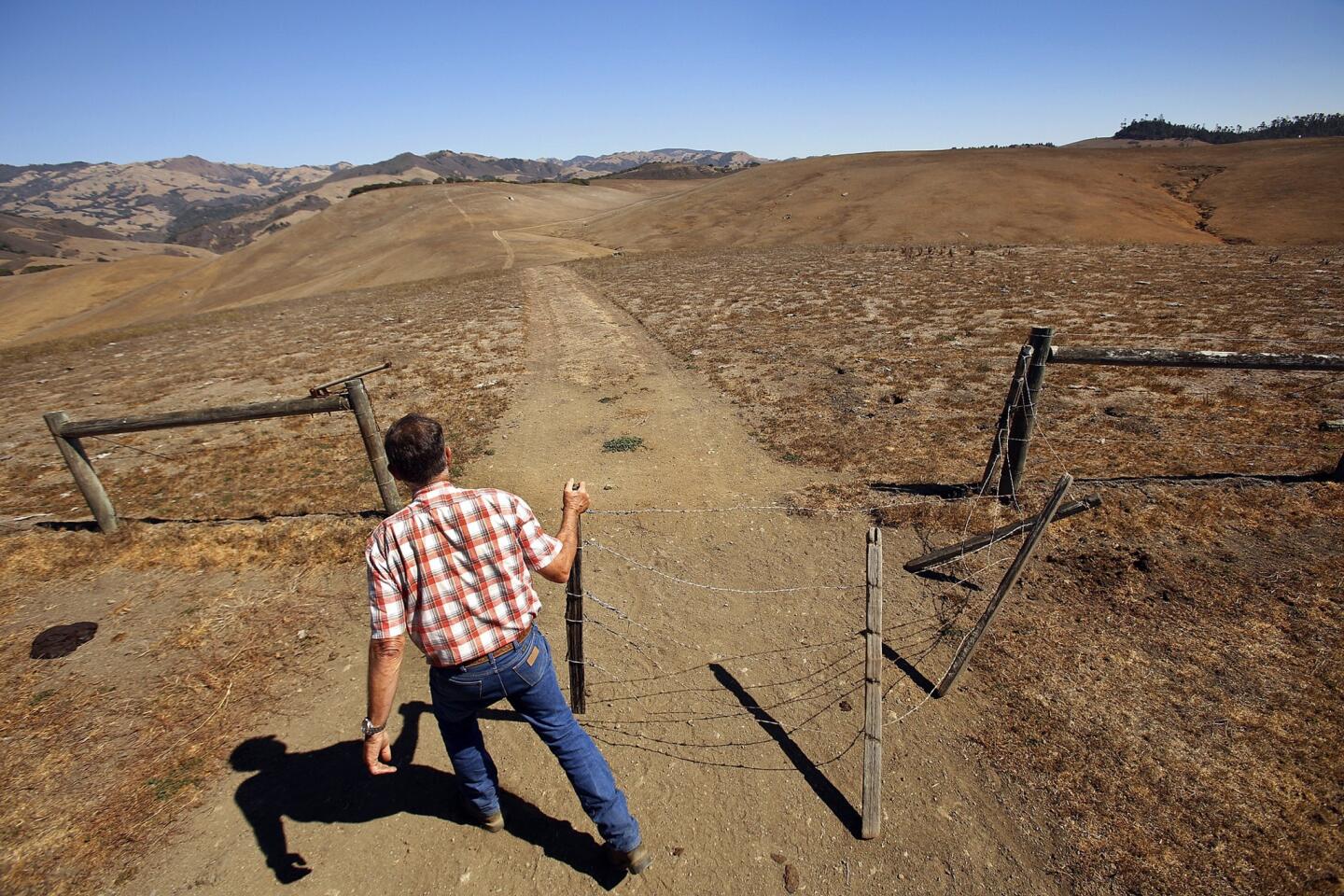
Pedotti closes a gate in in the Santa Lucia Mountain foothills. “The residents of Cambria are heroic,” he said. “They’re living on less water than anyone else in this state. You can’t squeeze another drop out of Cambria.” (Al Seib / Los Angeles Times)
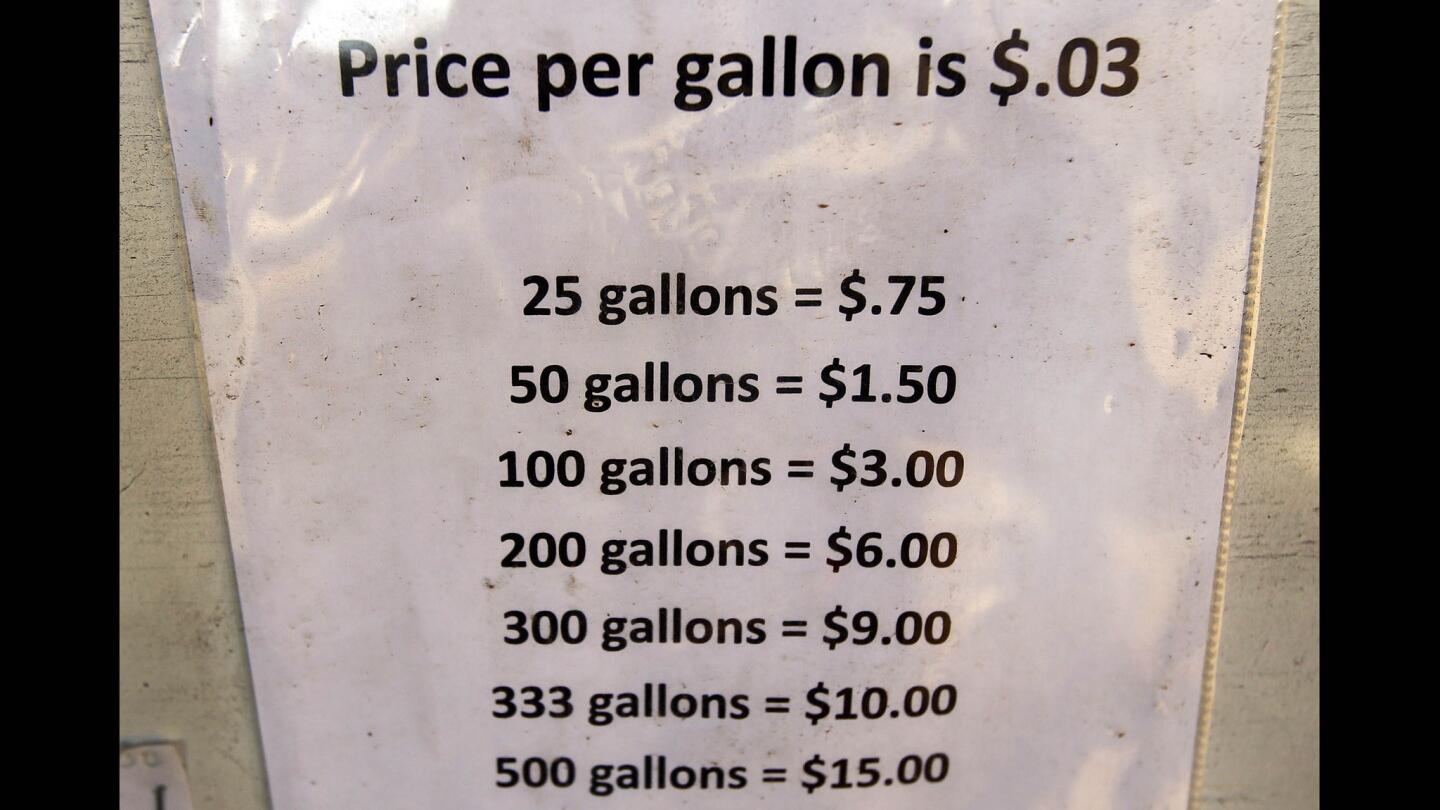
San Simeon Creek rancher Clyde Warren sells Cambria residents non-potable water. Opponents of a water treatment plant say they would prefer to build a reservoir to bank water during rainy years on land Warren has said he would sell to the Cambria Community Services District. (Al Seib / Los Angeles Times)
Advertisement
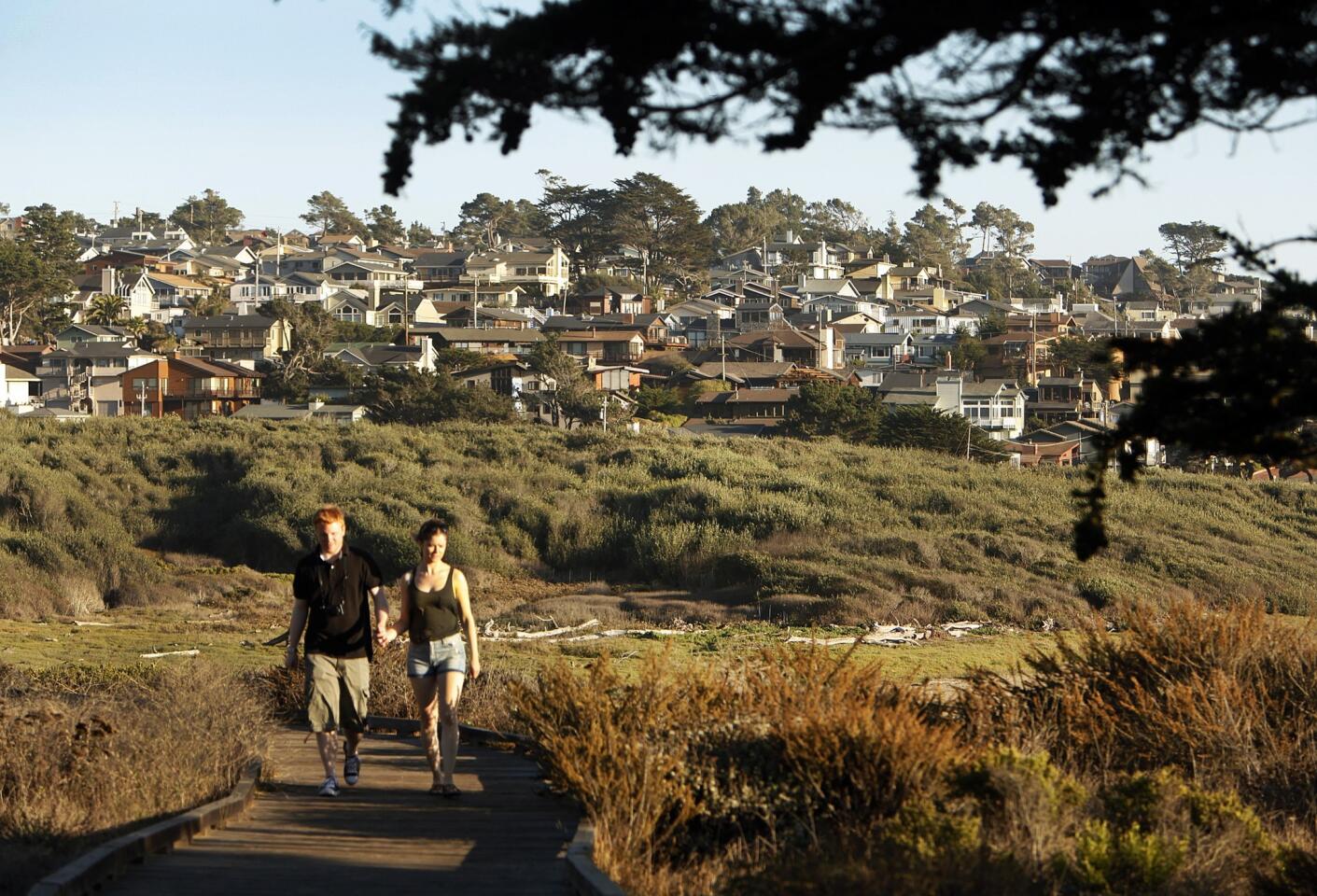
The Park Hill residential neighborhood in the Central Coast town of Cambria, which has cut water consumption 40%. Some residents are fighting the $9.13-million brackish-water treatment plant under construction along one of two creeks that feed Cambria’s aquifer. (Al Seib / Los Angeles Times)
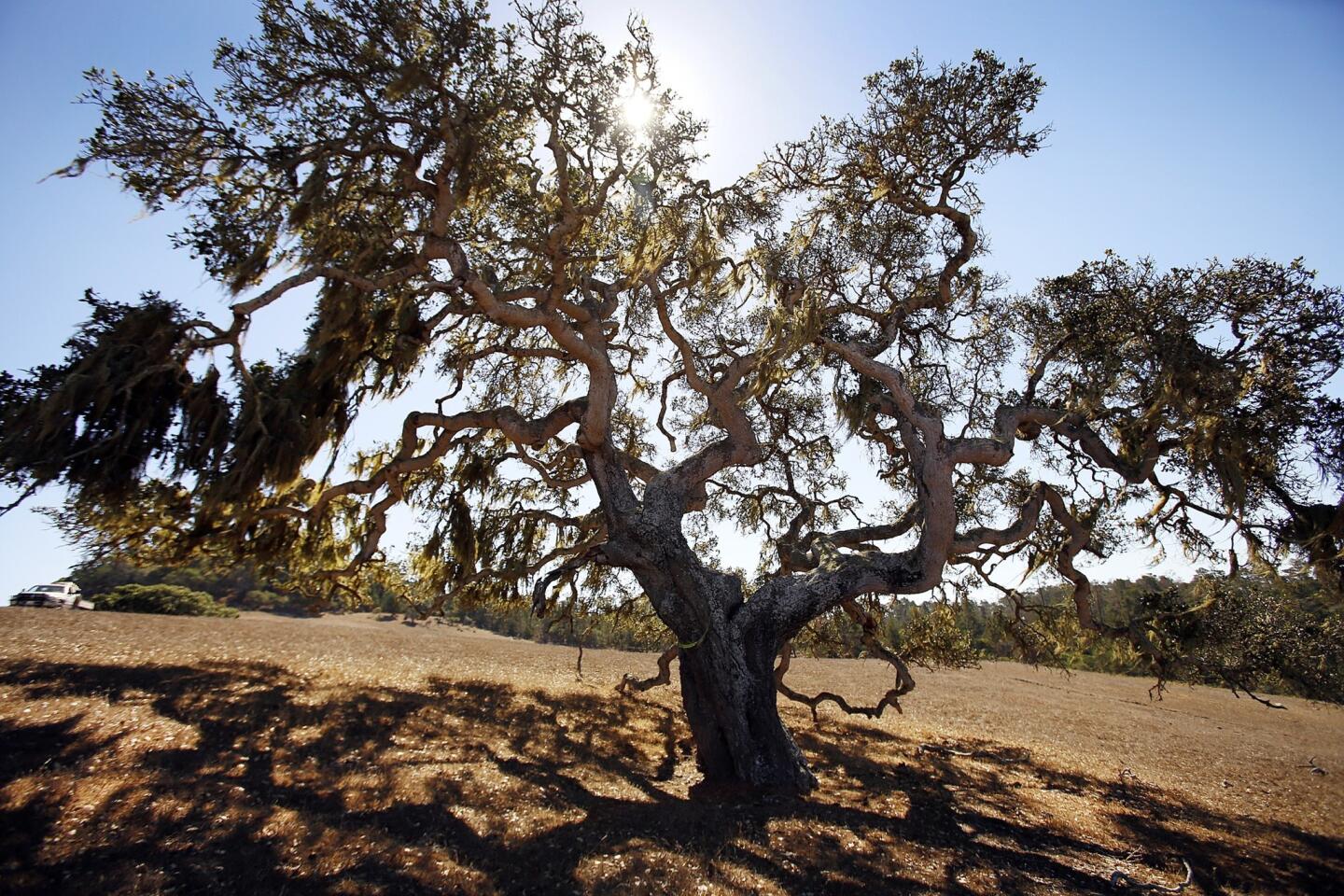
An Oak tree sits on Pedotti’s ranch. (Al Seib / Los Angeles Times)
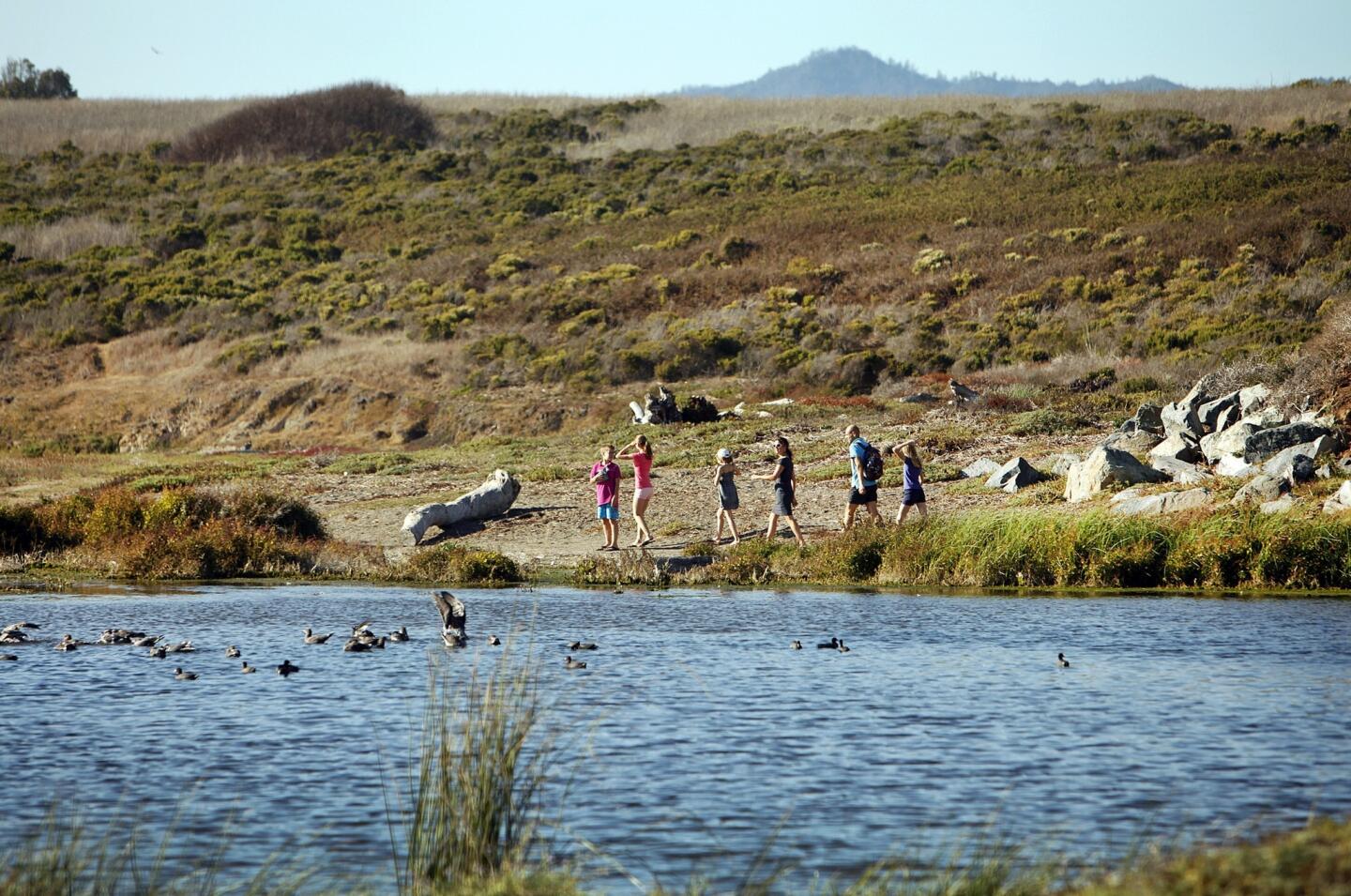
People enjoy a walk along the San Simeon Creek lagoon in Cambria. (Al Seib / Los Angeles Times)
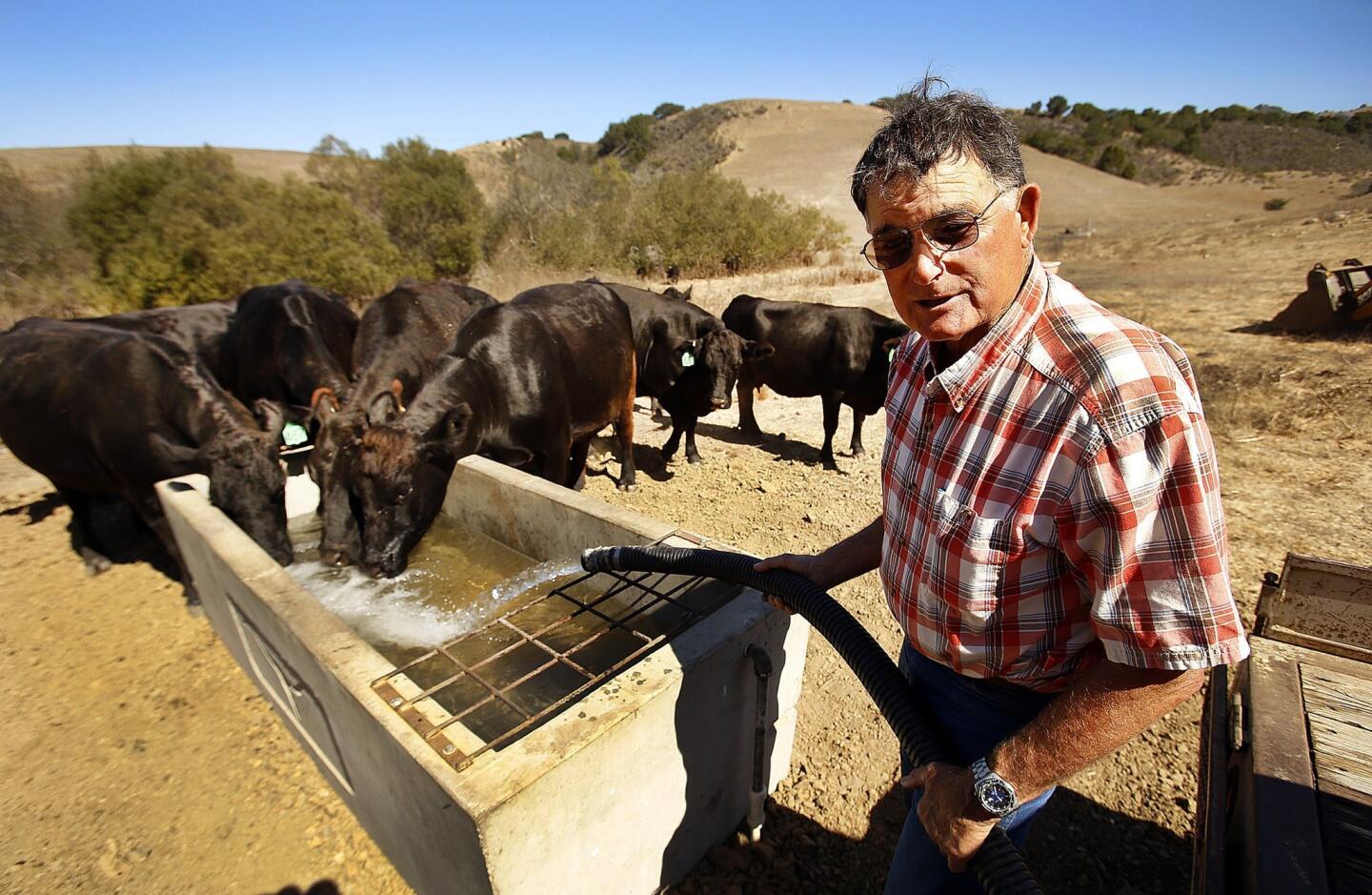
Pedotti fills a trough from a 500-gallon tank of water he filled from one of his wells. (Al Seib / Los Angeles Times)
Advertisement
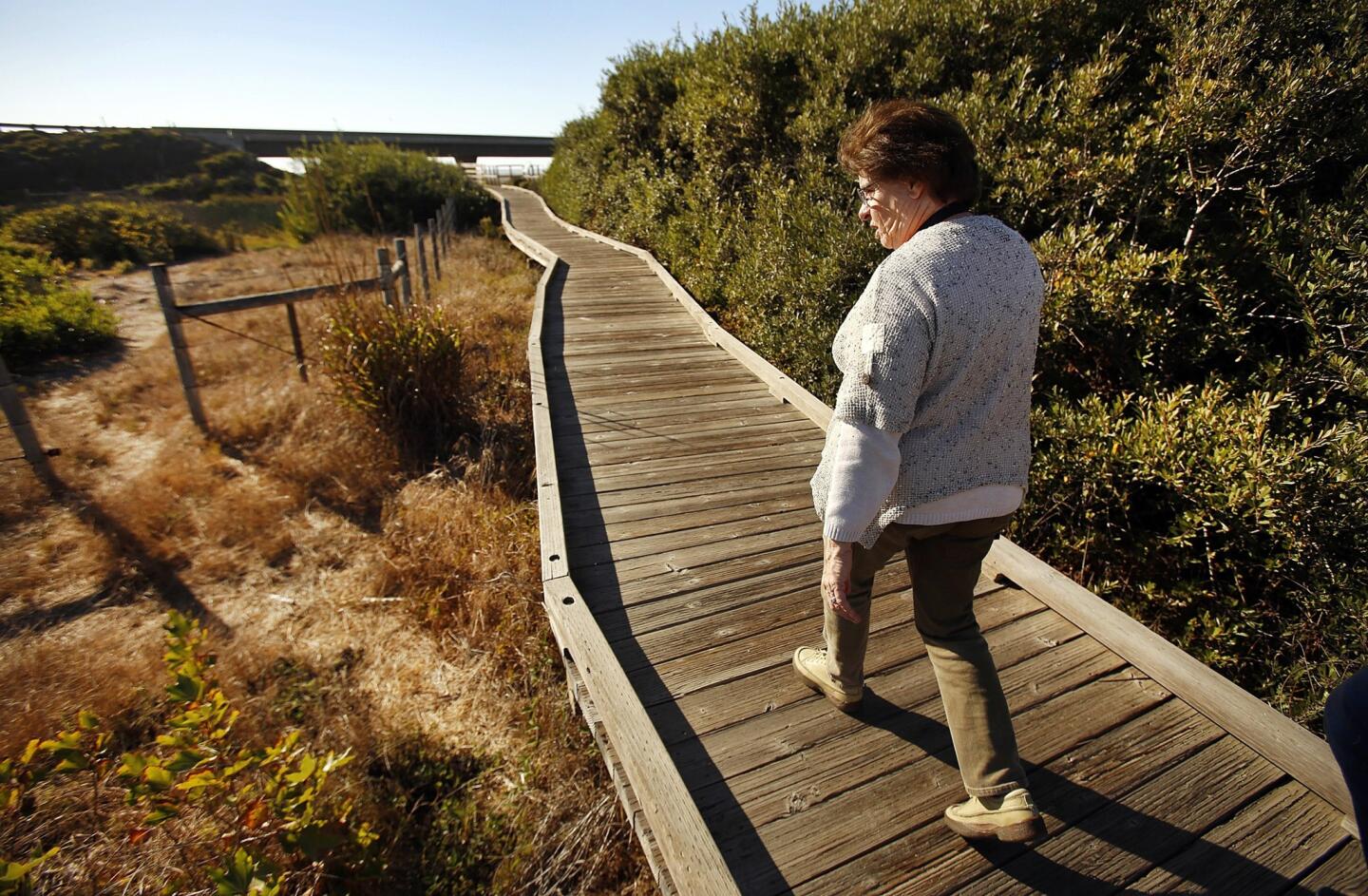
Cambria resident Tina Dickason walks along San Simeon Creek lagoon near where it meanders under Highway 1 to meet the Pacific Ocean. Dickason opposes the water treatment plant. “They’re trying to turn this into Carmel,” she said. (Al Seib / Los Angeles Times)
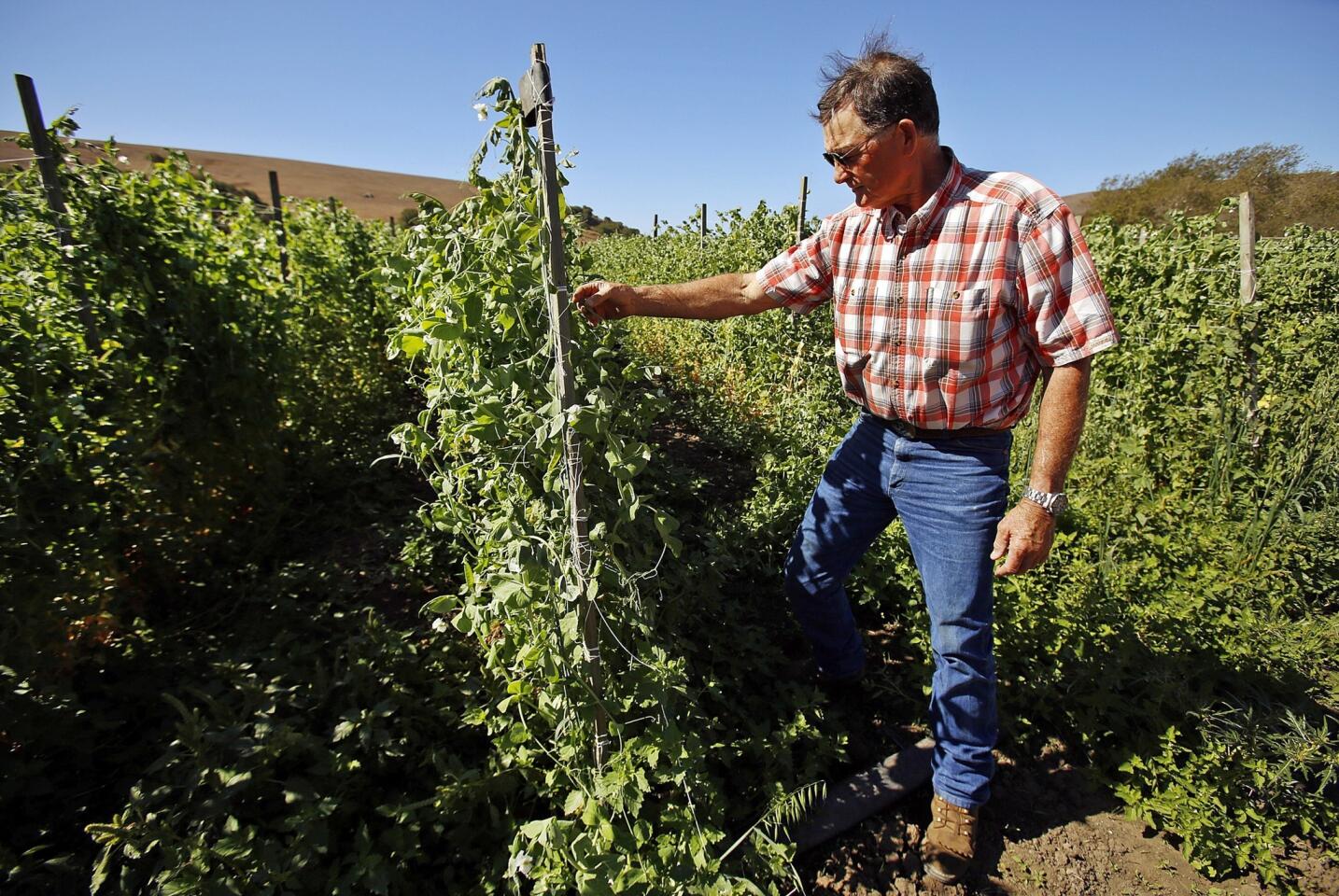
Pedotti tends to his beans planted on half of his 103 acres of irrigated land. (Al Seib / Los Angeles Times)
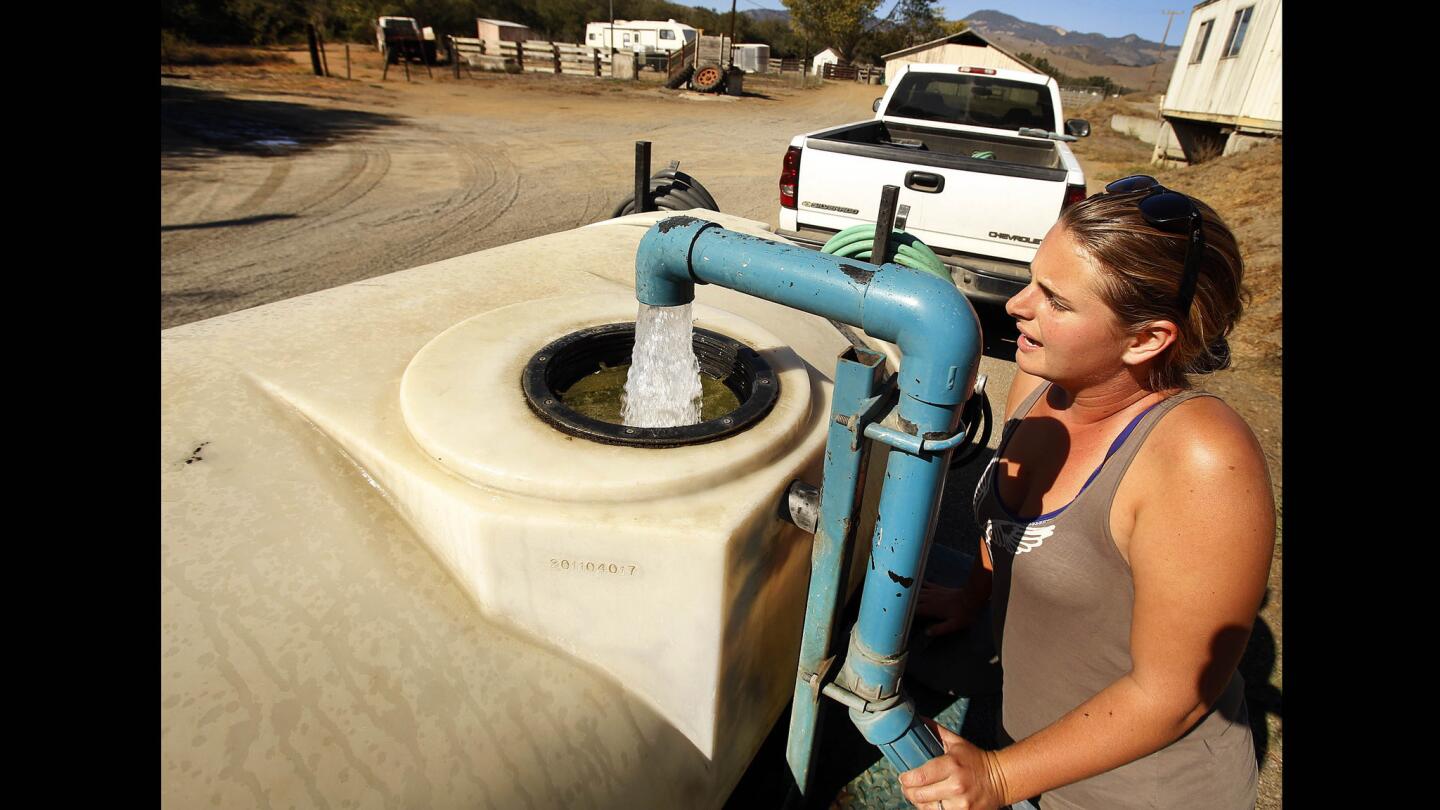
Heather Menges fills a 500-gallon water tank in her pickup from the well of rancher Clyde Warren. It was one of 10 trips she makes to Warren’s well six days a week, delivering non-potable water to residents and hotels for use on yards and in gardens. (Al Seib / Los Angeles Times)
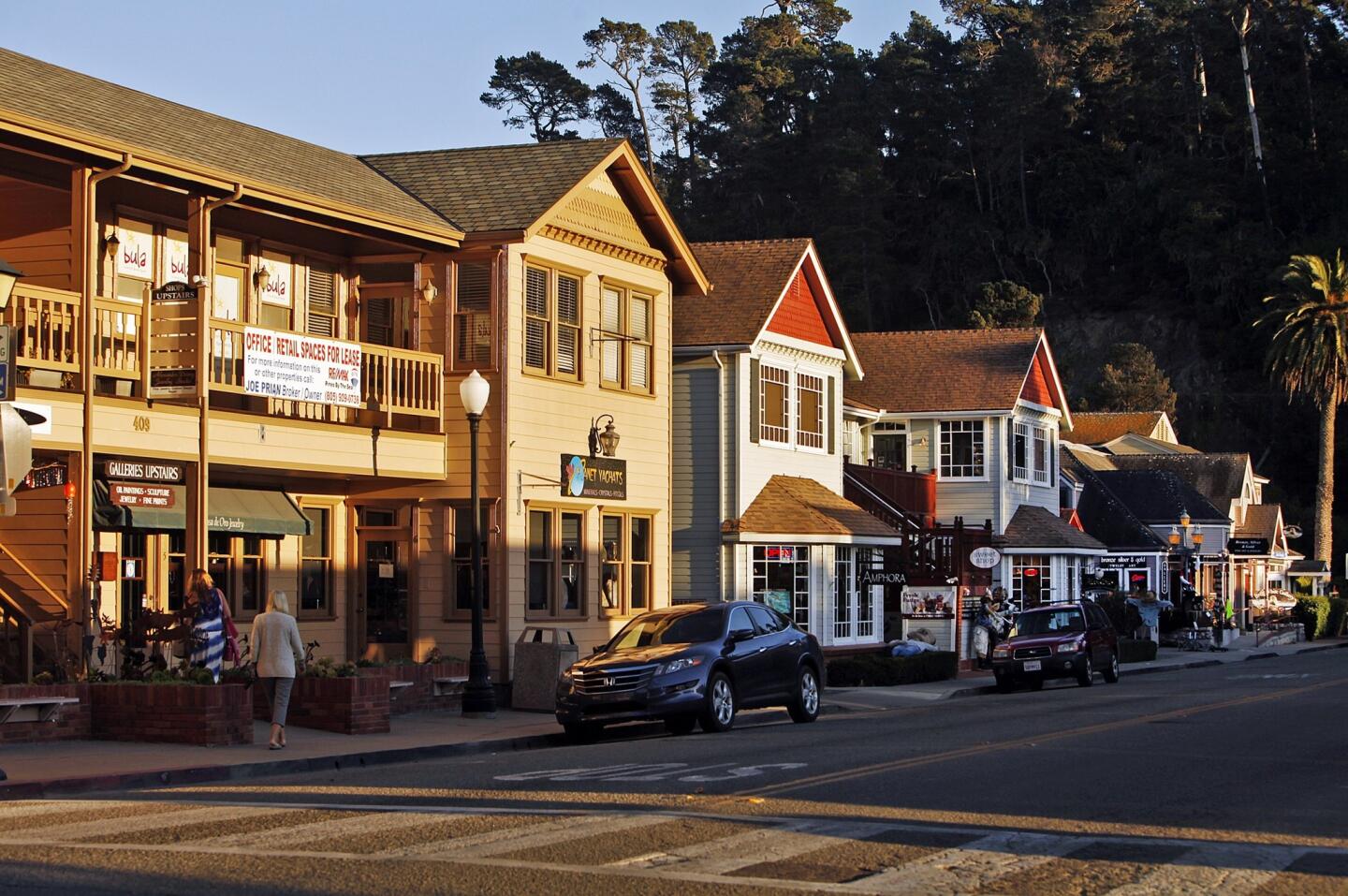
Cambria has cut water consumption 40%, but that is not enough, officials say. Above, a portion of the downtown area. (Al Seib / Los Angeles Times)
Advertisement
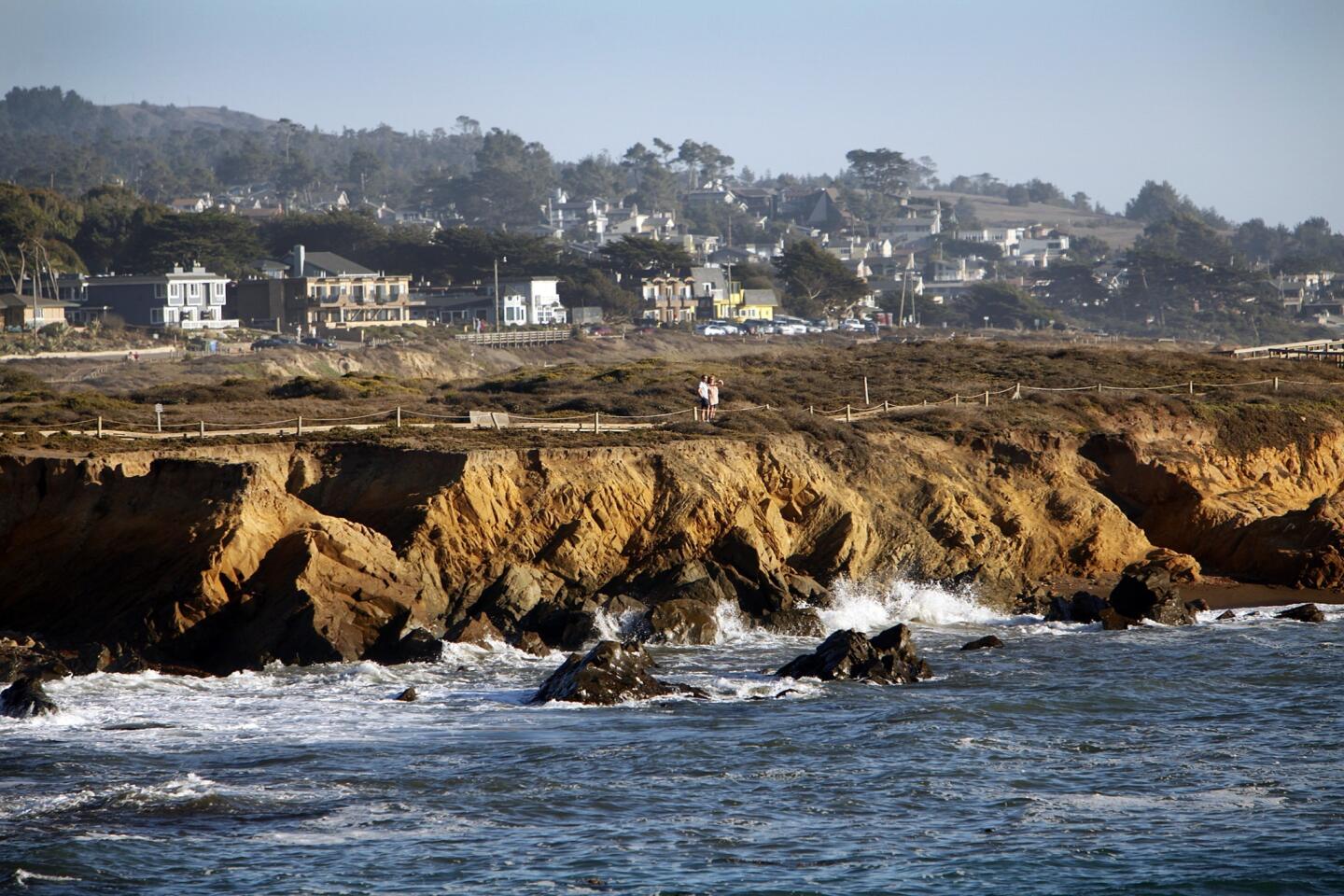
The brackish-water treatment plant is being built under an emergency permit approved by San Luis Obispo County. Above, a section of Moonstone Beach in Cambria, with hotels in the background. (Al Seib / Los Angeles Times)
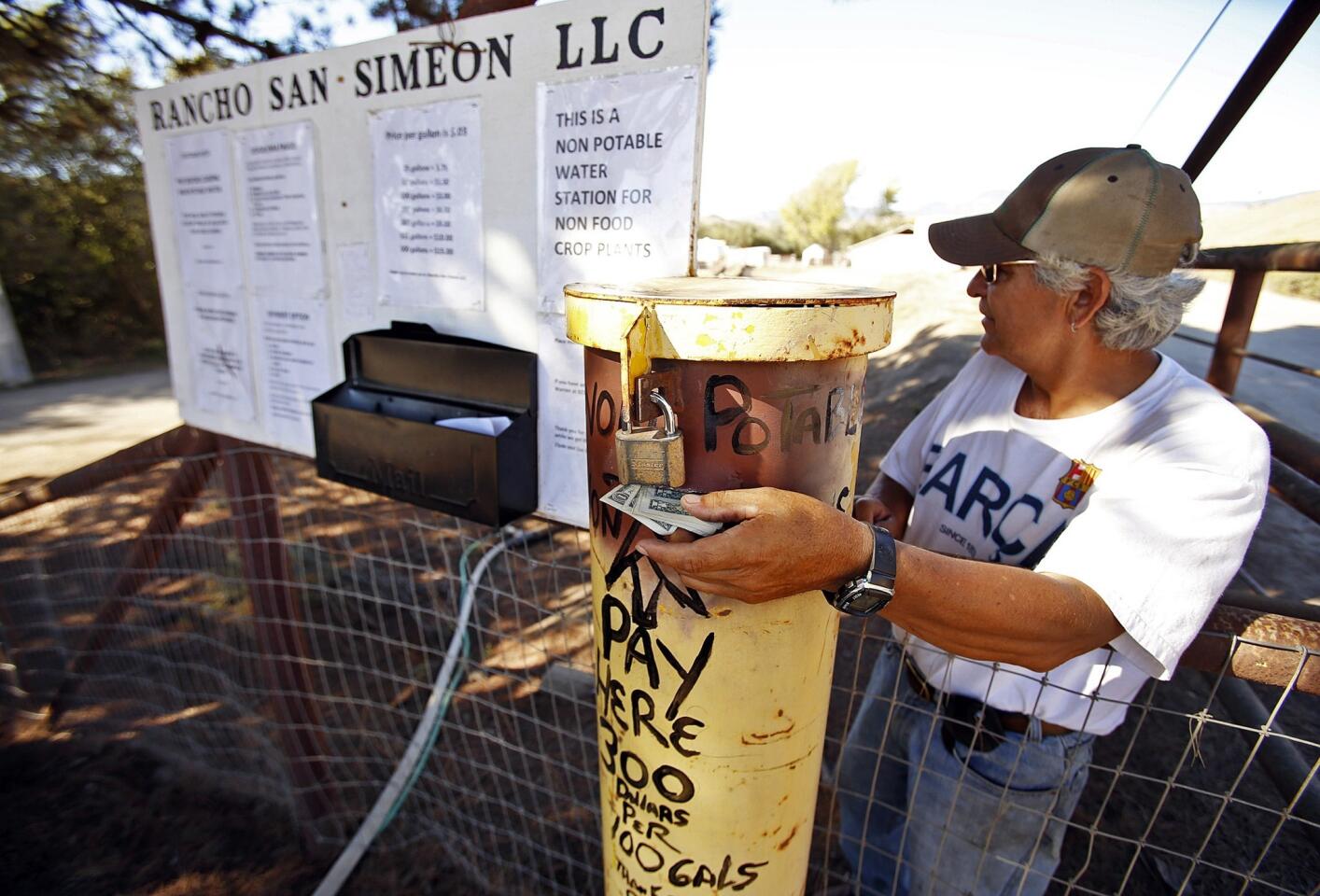
Warren makes a sale of non-potable water. (Al Seib / Los Angeles Times)







